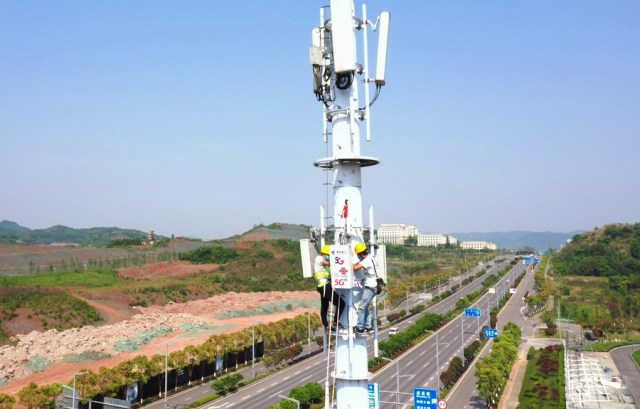5G networks are active in 47 of the world’s 70 largest economies by GDP, according to industry data released by Viavi Solutions.
 There are 2,497 cities globally with commercial 5G networks, across 92 countries. A further 23 countries have pre-commercial 5G trials underway and 32 countries have announced their 5G intentions. This leaves just 48 countries, many of which are smaller island nations, that have not publicly announced plans for 5G.
There are 2,497 cities globally with commercial 5G networks, across 92 countries. A further 23 countries have pre-commercial 5G trials underway and 32 countries have announced their 5G intentions. This leaves just 48 countries, many of which are smaller island nations, that have not publicly announced plans for 5G.
A total of 18 countries announced their first 5G deployments in 2022. The new 5G countries include two of the largest developing economies, India and Mexico, as well as other emerging economies such as Angola, Ethiopia, and Guatemala.
US displaces China to top the 5G cities leaderboard
The United States has topped the 5G cities leaderboard, displacing China. China, home to telecoms such as China Mobile, China Telecom and China Unicom, was the leader in previous VIAVI State of 5G updates since 2021. The number of 5G cities in China has remained static at 356 since the June 2021 update.
In the U.S., the number of cities with 5G networks has grown significantly to 503, compared with just 297 in May 2022. Leading 5G operators in the United States include AT&T, T-Mobile US and Verizon.
The number of 5G cities is just one aspect of the relative success of the two nations’ 5G evolution, with China ahead in other key metrics. The United States’ breadth of 5G coverage contrasts with China’s depth of 5G coverage, with China remaining ahead in data speeds, 5G subscribers and base stations deployed.
The top 10 5G countries in terms of 5G coverage are: United States (503 cities), China (356), Finland (137), The Phillippines (105), Canada (90), South Korea (85), Japan (76), Italy (65), United Kingdom (61), and France (52).
Manufacturing sector emerges as clear leader in Private 5G
The manufacturing sector has emerged as the clear leader for private 5G networks, with 44 percent of the publicly announced deployments, followed by logistics, education, transport, sports, utilities, and mining.
Standalone 5G gains momentum
5G Standalone (SA) networks, meaning networks that have been built using a new 5G core and which operate independently of existing 4G infrastructure, are gaining momentum. As of January 2023, there were 45 5G SA networks in place, across 23 countries. This contrasts with January of 2022, when there were just 24 NSA networks globally.
5G SA networks offer a wider array of use cases and monetization models compared to non-standalone networks (NSA), which are relatively limited in their applications beyond enhanced Mobile Broadband (eMBB), meaning faster data speeds. With a near doubling of 5G SA networks, more operators will start to realize more of the long-promised commercial benefits of 5G, while consumers and businesses in those countries may start to notice improved network speeds.
Spectrum for 5G in the millimeter wave (mmWave) band, generally considered to be 24 GHz and above, has garnered a lot of interest from diverse countries. The spectrum range offers significant benefits with the highest speeds, lowest latency and highest capacity. mmWave spectrum also comes with downsides such as lower ranges, higher equipment costs and the need for dense deployments.
Several of the largest mobile markets, including China, India, and the United States have made mmWave available as well as those with tiny populations such as Seychelles and Guam. The same pattern of diversity holds true across developed markets such as Germany and Japan through to emerging economies like Indonesia and Vietnam.





